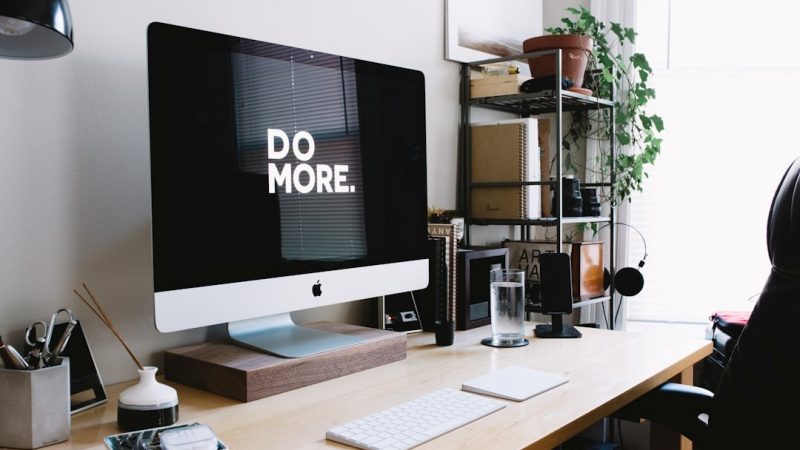Mirroring iPhone to PC: The Need, Importance, and Benefits

Screen mirroring is a powerful technology that allows users to display their iPhone’s screen on a larger computer monitor, creating a seamless bridge between mobile and desktop environments. This capability has become increasingly important in today’s digital landscape, where users need flexible ways to access, manage, and share their mobile content across multiple devices.
What is iPhone Mirroring to PC?
iPhone mirroring to PC is the process of wirelessly or wirelessly connecting your iPhone to a Windows or Mac computer, which then displays your iPhone’s screen in a dedicated window or on the entire monitor. This technology enables real-time synchronization between devices, allowing users to view their iPhone’s content on a much larger display while maintaining full control of their mobile device.
Unlike traditional screen sharing or recording, modern screen mirroring solutions provide live, interactive access to your phone, meaning you can tap, swipe, type, and control your iPhone directly from your computer’s keyboard and mouse. This transforms the iPhone from a standalone device into an extension of your desktop computing environment.
Why You Need iPhone Mirroring to PC
There are numerous practical scenarios where mirroring your iPhone to a PC becomes invaluable:
Convenience and Accessibility
When your iPhone is buried in a bag, across the room, or simply out of reach, iPhone mirroring eliminates the need to physically retrieve it. This proves especially useful for users who have pets sleeping on their lap or need to remain stationary for work purposes. Instead of interrupting your workflow, you can access everything from your iPhone directly through your computer window.
Eye Strain Prevention
Staring at a small phone screen for extended periods can cause eye strain and headaches. By mirroring your iPhone to a larger PC monitor, you can enjoy videos, browse content, and interact with apps using a screen that’s far more comfortable to view. This is particularly important for users who spend long hours working at their desks and need to maintain their iPhone accessibility without compromising their vision.
File Transfer and Workflow Optimization
With modern iOS versions and tools like iPhone Mirroring on Mac with drag-and-drop support, you can seamlessly transfer files between devices. For content creators, developers, and professionals, this eliminates the frustration of waiting for iCloud syncing to complete and allows instant file movement between your iPhone and computer.
App-Only Functionality
Many services offer superior functionality through their mobile apps compared to web interfaces. Instagram, for example, provides more robust posting options through the native app than through the web browser. iPhone mirroring lets you use these app-exclusive features directly from your computer without needing to switch devices constantly.
Importance and Professional Applications
iPhone mirroring has transcended casual use and become an essential tool across multiple professional domains:
Application Development and Testing
Developers can test iPhone apps on a larger screen, making it significantly easier to identify UI bugs, layout issues, and user experience problems. By mirroring their iPhone during development, programmers can spot visual glitches that might be harder to detect on a small screen, accelerating the debugging process and improving app quality.
Content Creation and Recording
For tutorials, explainer videos, gameplay recordings, and demonstrations, iPhone mirroring provides a professional way to capture your phone’s screen with better resolution and clarity. Content creators can record their mirroring session directly, producing high-quality video content suitable for YouTube, TikTok, and other platforms.
Business Presentations
Remote presentations become significantly smoother when you can mirror your iPhone to a PC and integrate it with video conferencing platforms like Zoom or Microsoft Teams. You can display live app demonstrations, mobile-based dashboards, or iOS-exclusive content to clients and colleagues, making presentations more compelling and interactive.
Educational Settings
Educators can mirror their iPhone to classroom displays or computers, enabling dynamic lesson delivery. Teachers can demonstrate educational apps, share content, and create interactive learning experiences. Students can also mirror their devices to showcase their work and encourage peer-to-peer collaboration.
Technical Support and Remote Work
IT professionals and support teams can use iPhone mirroring to troubleshoot mobile device issues remotely, manage notifications while working, and provide better technical support to users experiencing iPhone problems.
Productivity Benefits
Multitasking Without Distraction
By mirroring your iPhone to your PC, you can keep your physical iPhone out of sight but still remain connected to important notifications and messages. This reduces the psychological temptation to pick up your phone and get distracted while maintaining awareness of critical updates and communications.
Keyboard Efficiency
Typing on a physical keyboard is substantially faster and more efficient than using an iPhone’s virtual keyboard. For users who need to respond to messages, complete forms, or enter lengthy text, iPhone mirroring to a PC dramatically speeds up these tasks by allowing them to use their desktop keyboard while maintaining their iPhone’s native interface.
Centralized Notification Management
Once iPhone mirroring is properly configured, all notifications from your iPhone can appear on your Mac or PC, ensuring you stay informed without context-switching. This consolidation of notification channels helps maintain focus while keeping you aware of urgent messages and alerts.
Simplified Device Management
Rather than maintaining separate workflows for iPhone and PC tasks, iPhone mirroring creates a unified workspace. This is especially valuable for professionals who rely on iPhone-specific apps that don’t have desktop equivalents. With mirroring, you can access these apps directly from your computer, eliminating the need to constantly switch between devices.
Technical Advantages
No Software Bloat
macOS and Windows have long histories of system extensions, startup items, and background processes that consume storage and processing power. Large application suites often install numerous auxiliary files throughout your system. By using iPhone mirroring, you can access iOS apps directly without installing them on your PC, avoiding the “app creep” problem that plagues desktop operating systems.
Enhanced Security and Privacy
iOS is inherently more isolated than desktop operating systems, with strict sandboxing and controlled app interactions. When you access iOS apps through iPhone mirroring rather than installing desktop versions, you maintain these security benefits while still accessing the functionality you need. Additionally, many mirroring solutions offer robust data protection and privacy safeguards for remote connections.
Methods Available for iPhone Mirroring to PC
AirPlay (Apple Native)
For Mac users, AirPlay is the built-in solution that comes natively on newer iOS and macOS devices. However, Windows PC users need third-party solutions like AirDroid Cast to use AirPlay functionality, making them AirPlay-compatible receivers.
Third-Party Applications
Numerous applications facilitate iPhone to PC mirroring:
AirDroid Cast: Offers free wireless local mirroring with optional premium features for remote casting. It supports multiple simultaneous connections with two-way audio and works across iOS, Android, Windows, and macOS.
Reflector 4: Provides WiFi-only mirroring with an intuitive interface and professional-grade features like screenshot capture and screen recording. However, it requires paid licensing without a free version.
ApowerMirror: Supports both USB and WiFi connections with advanced features, including screen recording and multi-device connections. It offers robust data protection, but one-way control only in standard mode.
Phone Link (Microsoft): A built-in Windows feature designed for iPhone message and notification syncing, though it lacks full mirroring capabilities compared to dedicated third-party tools.
Dr.Fone Air: Offers web-based screen mirroring compatible with all devices and provides high-quality casting with privacy protections.
Conclusion
iPhone mirroring to PC represents a fundamental shift in how users interact with their mobile devices in professional and personal contexts. Beyond mere convenience, it addresses real productivity challenges by reducing eye strain, streamlining workflows, eliminating device-switching friction, and providing access to iPhone-exclusive functionality without cluttering your PC with unnecessary software. Whether you’re a developer testing applications, an educator engaging students, a content creator producing videos, or a professional managing multiple responsibilities, iPhone mirroring transforms your iPhone from an isolated device into an integrated component of your computing ecosystem.
The combination of Apple’s native mirroring capabilities and robust third-party solutions means that users on both Mac and Windows platforms now have flexible, reliable options for bridging their iPhone and PC environments—making iPhone mirroring an increasingly essential tool in the modern digital workspace.





